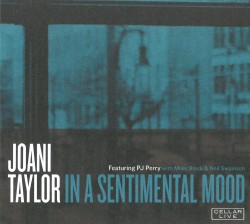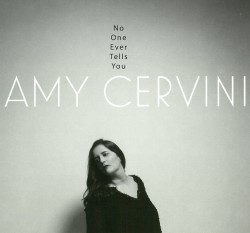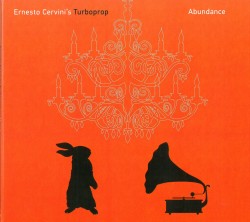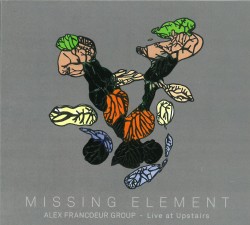Something in the Air | Multiple Sonic Pleasures Available from Multi-Disc Sets - December 2018 / January 2019
When inspiration refuses to be limited by the single disc format, enterprising musicians record multi-CDs in order to showcase more aspects of their work. Such collections are released throughout the year, but it’s usually the holiday season when music fans have the time and inclination for extended listening. Here’s a sampling of some of this year’s most accomplished multiple-CD sets from the exploratory side of creative music.
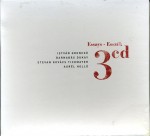 A thriving but little-celebrated slice of the international jazz scene is in Hungary, and the appropriately titled Essays-Esszék (Adyton/Hunnia Records HRCD 1726 hunniarecords.com) offers improvisational dissertations in three configurations by two major Magyar improvisers, multi-reedist István Grencsó and keyboardist Barnabás Dukay. CD1, Waiting has Grencsó moving among saxophones, clarinets and flute, while Dukay sticks to piano, with both joined by associate Steven Kovács Tickmayer playing piano, samplers and electronics. CD2, Ritual Music, matches Grencsó’s soprano and tenor saxophones with Dukay playing church pipe organ. CD3, Two Visions Heard, is a live session from a Budapest club where Grencsó’s soprano and alto saxophones and bass clarinet and Dukay’s piano are joined by percussionist Aurél Holló. Ignoring the ecclesiastical canon on CD2, Dukay uses the dual keyboard vibrations as tersely as he plays piano. Here he downplays glissandi and cascades for minimal layering and slow-moving tone affiliations, allowing Grencsó to change interpretations from emotional tenor-saxophone storytelling to buzzing soprano sax lines that hiss as if propelled from a bagpipe blowstick and chanter. Tickmayer’s electronics create the continuum on Waiting, allowing more flow between the piano of Dukay, who is an academic, and the reed collection of Grencsó, who has been a major Hungarian jazzer since the late 1970s.
A thriving but little-celebrated slice of the international jazz scene is in Hungary, and the appropriately titled Essays-Esszék (Adyton/Hunnia Records HRCD 1726 hunniarecords.com) offers improvisational dissertations in three configurations by two major Magyar improvisers, multi-reedist István Grencsó and keyboardist Barnabás Dukay. CD1, Waiting has Grencsó moving among saxophones, clarinets and flute, while Dukay sticks to piano, with both joined by associate Steven Kovács Tickmayer playing piano, samplers and electronics. CD2, Ritual Music, matches Grencsó’s soprano and tenor saxophones with Dukay playing church pipe organ. CD3, Two Visions Heard, is a live session from a Budapest club where Grencsó’s soprano and alto saxophones and bass clarinet and Dukay’s piano are joined by percussionist Aurél Holló. Ignoring the ecclesiastical canon on CD2, Dukay uses the dual keyboard vibrations as tersely as he plays piano. Here he downplays glissandi and cascades for minimal layering and slow-moving tone affiliations, allowing Grencsó to change interpretations from emotional tenor-saxophone storytelling to buzzing soprano sax lines that hiss as if propelled from a bagpipe blowstick and chanter. Tickmayer’s electronics create the continuum on Waiting, allowing more flow between the piano of Dukay, who is an academic, and the reed collection of Grencsó, who has been a major Hungarian jazzer since the late 1970s.
Tracks such as Bud and Blossom point out subtle differences in approaches. On the first, while the pianist plinks and stops high-pitched notes in a serious manner, as if Arthur Rubinstein were playing a toy piano, the tenor saxophonist’s basso blowing mixed with circular breathing suggest a marriage between Archie Shepp and Evan Parker. Both players bond quickly though, which sets up the following Blossom as a restrained intermezzo. As echoing tones hang in the air, Grencsó’s moderato bass clarinet flurries extend the exposition leisurely, as Dukay’s piano responses are speedier and expressive – with electronic samples providing the perfect ostinato.
In the freer club setting, prodded by Holló’s minimalist percussion, the pianist and reedist play at greater lengths, especially during the nearly 44-minute Part 1. As Grencsó restrains his output to minimalist shading, Dukay’s hesitant soundboard stops amplify powerfully to meet the saxophonist’s relaxed asides. Cold, isolated keyboard notes magnify to sweeps, allowing the narrative to quickly turn percussive as reed split tones are introduced. Still it’s the saxophonist’s mellow sluices that propel the narrative. Finally an unexpected change of pace in the penultimate minutes has Holló’s vibe-like clatters torquing the sequence as the piano explodes with contrasting dynamics and the saxophonist projects unbroken cadences with innumerable theme variations. Wrapping up the track with cultured tones, a final unsettling reed quack posits the concept that high-quality improvising doesn’t have to be solemn.
Listen to 'Essays-Esszék' Now in the Listening Room
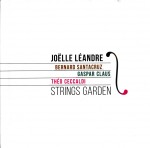 Another first-rate improviser who is the opposite of solemn is French bassist Joëlle Léandre. Strings Garden (Fundacja Sluchaj FSR 103/2018 sluchaj.org) consists of three CDs featuring her duos with violinist/violist Théo Ceccaldi, cellist Gaspar Claus or fellow bassist Bernard Santacruz. Playing it straight, Léandre only lets loose with gurgles, whimpers and mumbles on Leaves, the CD with Claus, alongside instrumentally pressurized spiccato lines in contrast to the cellist’s pointed timbres. Throbbing and stopping, his pizzicato twangs and her popping shudders unite to work up to a crescendo of rugged tones which overlap into double counterpoint. Leaf No.5 is the most invigorating duet with staccato sweeps from both evolving to storytelling along with the set’s most jazz-like groove. An instance of differing double bass POV, Trees, with Santacruz, finds both players dragging extended techniques from their respective string sets. Back and forth with jumps, buzzes and pulls, they manage to agree on a similar tone maturity by the climax, showcasing velocity and angularity without losing the underlying rhythm. Expressing herself with shrill multiphonics to counter Ceccaldi’s tendency towards impressionist sweeps on Flowers, the bassist’s low-toned scrubs add requisite fissure so the fiddler’s recital-like formula starts to splinter responsively. By the climactic Flower No.8, Ceccaldi’s paced twangs join the bassist in breaking the interface, first into sul tasto scrubs and latterly into wood-slamming pops and tremolo strands. The finale on Flower No.9 of stinging bow strokes echoing off tightly wound strings allows this suite to refer to the violinist’s Romantic-era roots without compromising the adventurous modernism implicit in both partners’ playing.
Another first-rate improviser who is the opposite of solemn is French bassist Joëlle Léandre. Strings Garden (Fundacja Sluchaj FSR 103/2018 sluchaj.org) consists of three CDs featuring her duos with violinist/violist Théo Ceccaldi, cellist Gaspar Claus or fellow bassist Bernard Santacruz. Playing it straight, Léandre only lets loose with gurgles, whimpers and mumbles on Leaves, the CD with Claus, alongside instrumentally pressurized spiccato lines in contrast to the cellist’s pointed timbres. Throbbing and stopping, his pizzicato twangs and her popping shudders unite to work up to a crescendo of rugged tones which overlap into double counterpoint. Leaf No.5 is the most invigorating duet with staccato sweeps from both evolving to storytelling along with the set’s most jazz-like groove. An instance of differing double bass POV, Trees, with Santacruz, finds both players dragging extended techniques from their respective string sets. Back and forth with jumps, buzzes and pulls, they manage to agree on a similar tone maturity by the climax, showcasing velocity and angularity without losing the underlying rhythm. Expressing herself with shrill multiphonics to counter Ceccaldi’s tendency towards impressionist sweeps on Flowers, the bassist’s low-toned scrubs add requisite fissure so the fiddler’s recital-like formula starts to splinter responsively. By the climactic Flower No.8, Ceccaldi’s paced twangs join the bassist in breaking the interface, first into sul tasto scrubs and latterly into wood-slamming pops and tremolo strands. The finale on Flower No.9 of stinging bow strokes echoing off tightly wound strings allows this suite to refer to the violinist’s Romantic-era roots without compromising the adventurous modernism implicit in both partners’ playing.
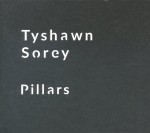 Advanced modernism could also be used describe to Pillars (Firehouse 12 Records FH12--01-02-028 firehouse12records.com), a three-CD exploration by New York drummer/composer Tyshawn Sorey. Conceived of as a triptych, each of the 75-minute-plus discs deals with a multiplicity of moods ranging from the melodic to the abstract and from nearly static drones to emphatically flowing free jazz. No cynosure composer, Sorey’s elaboration of the material is established by its interpretation by the ensemble of bassists Mark Helias, Carl Testa and Zach Rowden; guitarists Todd Neufeld and Joe Morris; trumpeter Stephen Haynes and trombonist Ben Gerstein plus Sorey. Inchoate or intense inventions are expanded throughout, as the band divides into smaller groups, and as multi-instrumentation adds textures from more brass, percussion, melodica, Tibetan horn and electronics. Divided into several sequences, Pillars I, for instance, evolves into ritual-like percussion pumping, encompassing a three-and-a-half-minute drum roll and overlapping patterns that are intermezzos rather than solos. Mostly concerned with the timbres available from massed strings, brass grace notes and flutter tonguing are secondary to the piece’s flow, with the theme splintering into micro-motions as sledgehammer-like percussion thumps and bizarrely oscillating electronics underline it. In sharp contrast, the concluding Pillars III fluctuates between a minimalist composition and full-out jazz improv, as assertive brass extensions gradually replace the microtonal string drone. As timbres vacillate among sonorous brass, low-pitched percussion power and distant signal-processing, guitar licks come to the front. Concussive idiophone rolls are unexpectedly succeeded by guitar strategies that could be straight out of a swing session only to vanish when trumpet and trombone snarls and shakes suggest hard bop, with blasting brass and guitarists’ slurred fingering alternating alongside drum rolls for a free jazz-like position. Eventually the jagged brass spits and guitar flanges are subsumed by rugged, reductionist electronics. Finally, a drum roll completes the section, while subtly linking it to Pillars I’s introduction.
Advanced modernism could also be used describe to Pillars (Firehouse 12 Records FH12--01-02-028 firehouse12records.com), a three-CD exploration by New York drummer/composer Tyshawn Sorey. Conceived of as a triptych, each of the 75-minute-plus discs deals with a multiplicity of moods ranging from the melodic to the abstract and from nearly static drones to emphatically flowing free jazz. No cynosure composer, Sorey’s elaboration of the material is established by its interpretation by the ensemble of bassists Mark Helias, Carl Testa and Zach Rowden; guitarists Todd Neufeld and Joe Morris; trumpeter Stephen Haynes and trombonist Ben Gerstein plus Sorey. Inchoate or intense inventions are expanded throughout, as the band divides into smaller groups, and as multi-instrumentation adds textures from more brass, percussion, melodica, Tibetan horn and electronics. Divided into several sequences, Pillars I, for instance, evolves into ritual-like percussion pumping, encompassing a three-and-a-half-minute drum roll and overlapping patterns that are intermezzos rather than solos. Mostly concerned with the timbres available from massed strings, brass grace notes and flutter tonguing are secondary to the piece’s flow, with the theme splintering into micro-motions as sledgehammer-like percussion thumps and bizarrely oscillating electronics underline it. In sharp contrast, the concluding Pillars III fluctuates between a minimalist composition and full-out jazz improv, as assertive brass extensions gradually replace the microtonal string drone. As timbres vacillate among sonorous brass, low-pitched percussion power and distant signal-processing, guitar licks come to the front. Concussive idiophone rolls are unexpectedly succeeded by guitar strategies that could be straight out of a swing session only to vanish when trumpet and trombone snarls and shakes suggest hard bop, with blasting brass and guitarists’ slurred fingering alternating alongside drum rolls for a free jazz-like position. Eventually the jagged brass spits and guitar flanges are subsumed by rugged, reductionist electronics. Finally, a drum roll completes the section, while subtly linking it to Pillars I’s introduction.
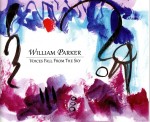 Sorey’s multi-disc sessions demonstrate another facet of his talent; so does Voices Fall from the Sky (Centering 1015/1016/1017 aumfidelity.com) for William Parker. Known as an exceptional bassist and bandleader, Parker is also a poet and songwriter and these three CDs, which feature 17 (!) singers plus ensembles ranging from big bands to solo, interpret Parker’s writing for vocalists. Putting a lie to those who say free improvisation is divorced from lyricism and the song form, the 34 selections are performed in rhymed or free verse and deal in the main with themes of anti-materialism, universal love and the uplifting achievements of jazz heroes. The five-part The Blinking of the Ear, for instance, features mezzo-soprano AnnMarie Sandy interpreting the Dadaist lyrics a little differently than she would formal recital material. City of Flowers is an anti-war lament sung by Andrea Wolper with only bassoon backing, while We Often Danced, Fay Victor’s extended song-recitation about slavery and the African-American diaspora, is performed with additional theatrically due to a complementary trumpet obbligato and spackling string pulses throughout. The most affecting creations, though, are voiced by free-form specialist-singers Ellen Christi, Lisa Sokolov and Leena Conquest. Sokolov’s take on Band in the Sky for example, with its celebration of departed jazz figures, and backed by sprightly piano lines, manages to be profoundly dramatic whether she’s declaiming lyrics or speaking in tongues. Christi’s version of Falling Shadows, backed only by Parker’s sprawling double bass tones, includes wordless ululations and supple bel canto warbles. And Conquest’s extended delineation of the life of a civil rights activist, For Fannie Lou Hamer, is a moving portrait that slips back and forth from reined-in operatic theatricism to down-to-earth folksiness, with Parker using string and reed instruments for unique backing. Besides these serious themes, Conquest also provides some Nancy Wilson-like posturing on another tune and Ernie Odoom swings creatively on more rhythmic numbers like The Essence of Ellington.
Sorey’s multi-disc sessions demonstrate another facet of his talent; so does Voices Fall from the Sky (Centering 1015/1016/1017 aumfidelity.com) for William Parker. Known as an exceptional bassist and bandleader, Parker is also a poet and songwriter and these three CDs, which feature 17 (!) singers plus ensembles ranging from big bands to solo, interpret Parker’s writing for vocalists. Putting a lie to those who say free improvisation is divorced from lyricism and the song form, the 34 selections are performed in rhymed or free verse and deal in the main with themes of anti-materialism, universal love and the uplifting achievements of jazz heroes. The five-part The Blinking of the Ear, for instance, features mezzo-soprano AnnMarie Sandy interpreting the Dadaist lyrics a little differently than she would formal recital material. City of Flowers is an anti-war lament sung by Andrea Wolper with only bassoon backing, while We Often Danced, Fay Victor’s extended song-recitation about slavery and the African-American diaspora, is performed with additional theatrically due to a complementary trumpet obbligato and spackling string pulses throughout. The most affecting creations, though, are voiced by free-form specialist-singers Ellen Christi, Lisa Sokolov and Leena Conquest. Sokolov’s take on Band in the Sky for example, with its celebration of departed jazz figures, and backed by sprightly piano lines, manages to be profoundly dramatic whether she’s declaiming lyrics or speaking in tongues. Christi’s version of Falling Shadows, backed only by Parker’s sprawling double bass tones, includes wordless ululations and supple bel canto warbles. And Conquest’s extended delineation of the life of a civil rights activist, For Fannie Lou Hamer, is a moving portrait that slips back and forth from reined-in operatic theatricism to down-to-earth folksiness, with Parker using string and reed instruments for unique backing. Besides these serious themes, Conquest also provides some Nancy Wilson-like posturing on another tune and Ernie Odoom swings creatively on more rhythmic numbers like The Essence of Ellington.
Mixing serious sentiments and exceptional sounds, Voices Fall from the Sky emphasizes more aspects of Parker’s considerable talents, with enough audio space in which to display them. That is the collective achievement of these multi-disc sets: rather than collecting a lot of similar music, the expanse demonstrates the pliability of each leader’s vision.



